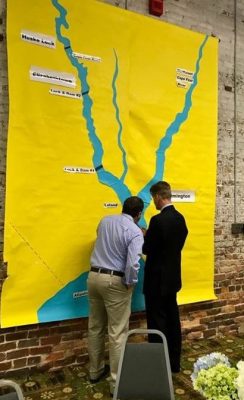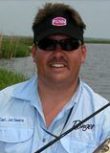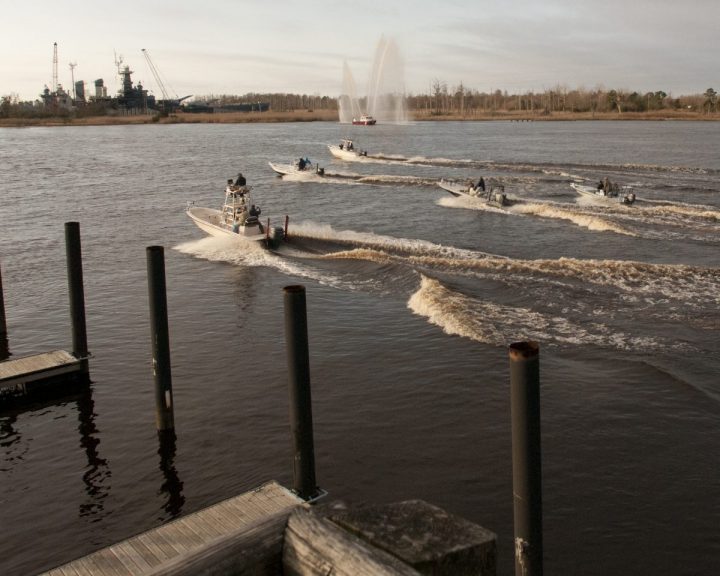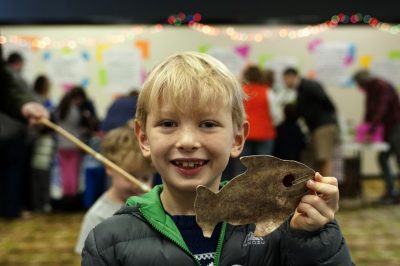Editor’s note: To stimulate discussion and debate, Coastal Review Online welcomes differing viewpoints on topical coastal issues. See our guidelines for submitting guest columns. The opinions expressed here are not those of Coastal Review Online or its publisher, the North Carolina Coastal Federation.
WILMINGTON — In these tumultuous times, while our elected officials and many in our media persistently incite polarization in attempts to drum up support or ratings, it’s heartening to witness Democrats and Republicans, young and old, fishermen and vegans all coming together in support of the same goal: improving and preserving the Cape Fear River basin.
Supporter Spotlight

Cape Fear River Watch held its ninth annual StriperFest Jan. 13-14 at Wilmington’s Coastline Conference and Event Center, kicking it off with a sold-out banquet and auction on the Friday night, followed the next day by a tag-and-release fishing tournament and a free community education day.
“Everyone can have their different points of view, but when it comes to the river, there is great agreement among divides; the Cape Fear River is the bloodline of our community,” said New Hanover County Commissioner Rob Zapple, who has attended the StriperFest banquet for years.
Zapple, a Democrat, was spotted crossing the banquet floor – and the political divide – in greeting former member of the North Carolina Senate, Republican Thom Goolsby, who was attending the banquet for the second time.
“Our Cape Fear River is a wonderful blessing that must be protected and preserved,” said Goolsby.
Guests at the banquet – some in three-piece suits and others sporting camouflage shorts – savored local seafood and sustainably raised pork, promoting our local fisheries and advancing awareness of what Cape Fear Riverkeeper Kemp Burdette said is the most pressing issue facing the river this year – pollution from North Carolina’s 6,500 concentrated animal feeding operations. In terms of production, North Carolina’s hog and poultry operations rank second and third in the nation, respectively, generating 10 billion gallons of animal waste, annually, and they are concentrated just upriver from Wilmington, in Duplin and Sampson counties.
Supporter Spotlight
“If the state doesn’t start enforcing existing laws and pushing for improved regulation where necessary, we may pass the tipping point and the river — our drinking water — will suffer greatly,” said Burdette.

Core to the mission of Cape Fear River Watch and a primary objective of StriperFest is fishery restoration. This issue, often contentious among fishermen and environmentalists, is what brought Capt. Jot Owens to Cape Fear River Watch nine years ago, when he helped found the striped bass, or striper, tag-and-release tournament. Capt. Jot said that while he sees an increase in the gap between environmentalists and fishermen due to today’s heated political atmosphere, “… working together, even with opposing political views, is all it takes.” And this event delivered.
The tag-and-release tournament brought fishermen, scientists and environmentalists together on the water in a combined effort to gather vital information on the striper population in the river.
“The bottom line is that the river needs help and it needs to be fixed for everyone; it’s too precious a resource,” he said. “Political stance aside, it’s all about the river.”

Like all good fishing stories, this year’s tag-and-release tournament was not without drama. A three-way tie among anglers, all of whom tagged seven stripers apiece, was narrowly broken by a 180-second difference between catch times.
While the boats were away gathering scientific data, local scientists were back at the conference center, kicking off StriperFest’s free Community Education Day. The early morning hours were dedicated to adults who were treated with science and information from two local experts on fishery restoration: Lawrence B. Cahoon, a marine biologist with the University of North Carolina Wilmington, and coastal scientist Dawn York of the Cape Fear River Partnership. But, education met youthful vigor at 11 a.m. as energetic kids poured into the conference room eager to touch a fish’s eyeball at the anatomy table, get an octopus painted on their face or head upstairs to the puppet show to learn about the rock rapids fish passage at Lock and Dam No. 1, which, to all you non-kids out there who missed the show, helps anadromous fish make it upriver to spawn; ask your kids what anadromous means.

It took the combined efforts of Cape Fear River Watch Educational Coordinator Kay-Lynn Plummer-Hernandez, and board member Melissa Juhan, who coordinated the activities, along with nearly 100 volunteers to execute this event. “Seeing so many people devote their free time to environmental education is monumental to me,” said Plummer-Hernandez. “We know that the only way to get people to care about and protect the river is to help them better understand it, and all the long hours of preparation and sleepless nights get paid for before my eyes through the eyes of the kids; the event is unlike any other.”
The success of the two-day event affirms that Cape Fear River Watch’s efforts to engage people and connect them to our community’s most important resource – our fresh water – are making real headway in restoring and preserving the Cape Fear River basin.
As an historic Inauguration Day approached upon an astoundingly fractured nation, this event offered a few days of respite from division and discord, as a patchwork of our community, all cut from different cloth, came together in reverence to the river – a reminder that our sacred places need from us a little grace and a lot of effort – and like the river, we are stronger when we converge.








